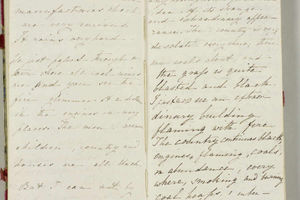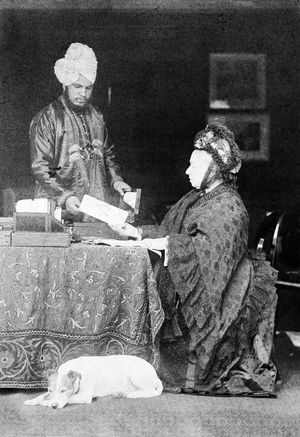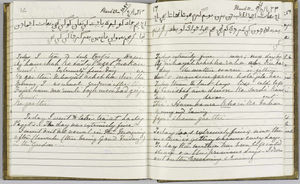Queen Victoria's 'large and dirty town' verdict on Wolverhampton
Wolverhampton - 'a large and dirty town' but with friendly people - that was the future Queen Victoria's blunt verdict on the city, her early diaries reveal, as they are set to go on show in an exhibition.

Princess Victoria was given her first journal by her mother, the Duchess of Kent, in August 1832 on their journey to Powis Castle in Wales.
The Duchess took her 13-year-old daughter on a series of educational tours around the country for the public to see their future Queen and gave the book to Victoria to record her impressions of the places they would visit together.
The tour also took in the newly-industrialised Midlands, an unfamiliar sight for the young princess, who describes what she saw in the first pages of her new diary: "The men woemen (sic), children, country and houses are all black. But I can not by any description give an idea of its strange and extraordinary appearance. The country is very desolate every where; there are coals about, and the grass is quite blasted and black. I just now see an extraordinary building flaming with fire."
But she was charmed by the people she met along the way, writing: "We have just changed horses at Wolverhampton a large and dirty town but we were received with great friendliness and pleasure."
The young princess's timetable of her lessons dated the following year, 1833, reveals that Victoria would spend half an hour at 9 o'clock each morning writing in her journal, before lessons in history, geography, Latin or general knowledge.
The journal marks the beginning of a passion for writing that would last a lifetime. It was Queen Victoria's legacy - more than 43,000 pages within 141 journals, and a vast amount of personal and official correspondence - that in 1914 prompted the creation of a permanent home for all documents relating to the Royal Family and Royal Household.
As Queen, in addition to recording her thoughts and observations of daily life in her personal journals, she corresponded frequently with members of her family in Britain and throughout Europe, as well as with ministers, ambassadors, heads of state and the Church.
The Queen even kept brief diaries in Hindustani,13 of which survive in the Royal Archives today. Made Empress of India in 1877, 10 years later she had begun to learn Hindustani words. She was taught by one of her Indian servants, whose role gradually expanded to that of being the Queen's Indian Secretary and Munshi.
Queen Victoria continued to keep a diary almost up to the day of her death in 1901. Only 13 of the original volumes survive, dating from 1832 to 1836.
Upon the Queen's instructions, her daughter, Princess Beatrice, produced abridged copies of the remaining volumes, destroying the originals.
In 1912 Queen Victoria's grandson King George V decreed that 'All the Royal Archives shall be kept...in the Round Tower', and in 1914 the transfer of the records to their new home in the Round Tower at Windsor Castle began.
Queen Victoria's first journal is among more than 100 items in the book Treasures from the Royal Archives and is included in the accompanying exhibition of 25 documents at Windsor Castle, from next Saturday (May 17), celebrating the centenary of the Archives being housed in the Round Tower. Many of the documents will be seen for the first time.
Treasures from the Royal Archives is published by Royal Collection Trust next Saturday, May 17. It is available from royalcollection.org.uk/shop and from Royal Collection Trust shops priced at £19.95. It will also be available from bookshops at £29.95.
The exhibition Treasures from the Royal Archives is part of a visit to Windsor Castle from May 17 until January 25 next year.








